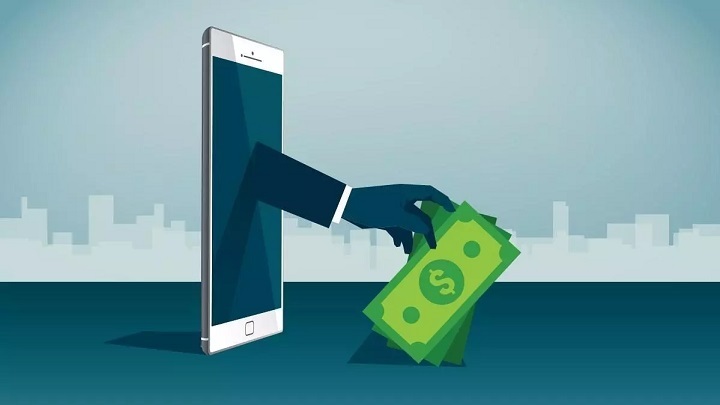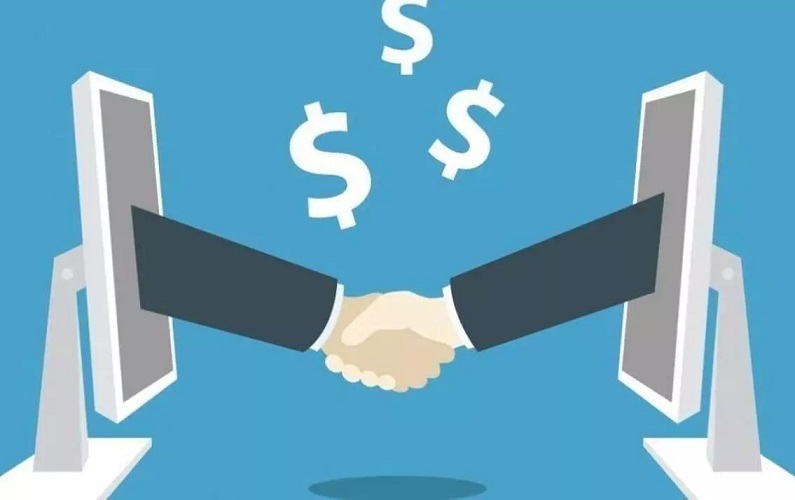 |
|
|
Losing his job and running out of money, Nguyen Tien Huy - an employee of a beer shop in Hanoi - had to borrow VND 8 million (nearly US$400) from an app named Cashwagon. When the payment was due, Huy could not pay the loan, so Cashwagon staff recommended that Huy borrow from another app to pay the debt. After three months, Huy’s total debt reached VND100 million (nearly $5,000). Huy is just one of many victims of black credit in the 4.0 technology era.
Social networks are now flooded with advertisements for easy loans with low interest rates and simple procedures through apps. If one just provides personal information, photo of citizen identification and phone number of relatives, one is eligible to borrow money from apps. Thus, people fall into a debt trap that it is difficult to get out of.
Tentacles
According to the State Bank of Vietnam (SBV), with a population of nearly 100 million, and 60% of people at low and middle income, the demand for consumer loans in Vietnam is enormous. Currently, about 47% of Vietnamese people borrow money, but only 18.5% of them borrow from official credit and financial institutions, and the rest borrow from relatives and friends, and also "black credit".
In fact, black credit is developing in a complicated situation. Taking full advantage of the development of technology, social networks, ... black credit services are offered via applications. Loans of this type are disbursed via bank accounts, and don’t require mortgage assets.
According to the Criminal Police Department (Ministry of Public Security), this agency has received it detected 1,047 black credit-related cases with 1,718 subjects, prosecuted 554 cases with 990 defendants, and administratively sanctioned 375 cases with 593 subjects in the past year.
 |
|
|
Particularly, for the act of lending heavy interest in civil transactions, 539 cases with 884 subjects were detected and received, of which 314 cases were prosecuted with 541 defendants, and 153 cases were administratively sanctioned with 249 subjects.
The State Bank of Vietnam and related organizations have stepped in to repel black credit, but it is still raging everywhere, like an octopus's tentacles.
Financial experts said that, in order to repel black credit, credit institutions must quickly deploy technology applications. Why has black credit used technology to lend online and disburse via bank accounts, but credit institutions cannot have not done the same?
Tech weapons
The Vietnam National Credit Information Center (CIC), a subsidiary of the State Bank of Vietnam, said that it launched the "Connection Portal" in June 2019 to support people and businesses in accessing loans in a simple way. This portal allows customers to register their loans and look up their credit information. The portal also regularly updates loan products of credit institutions, and creates many tools so that customers of all levels can easily search and choose suitable credit products.
After the customer chooses a loan product, with just a few simple steps on the keyboard of a computer or smartphone, they can press the submit button. As soon as the customer submits the loan request to the system, the loan demand information is automatically transferred to the credit institutions. Customers will have the opportunity to be approached by many credit institutions in a short time. About 500,000 accounts are registered on this portal, with 241,000 individual borrowing requests.
The demand for personal loans on this portal is continuously increasing. In the first six months of 2021, the growth rate was more than 160%. In many localities such as Ho Chi Minh City, Hanoi, Binh Duong, Dong Nai, Thanh Hoa... the demand rose from 2 to 2.5 times compared to the second half of 2020.
Nearly 4,000 accounts from 54 credit institutions have been granted the right to join the system to connect and approach borrowers. Although it is still in the early stages, more than 20% of loan demand has been fulfilled.
The Bank for Investment and Development of Vietnam (BIDV) has deployed a home loan application called "BIDV Home" on smartphones, and also allows customers to borrow unsecured consumer loans through the application “BIDV Smartbanking”.
According to BIDV, one of the reasons leading to the development of black credit is that individual customers, especially in rural areas, have few opportunities to access information and are afraid of procedures for bank loans. Technology applications can help customers reduce procedures and documents as well as loan processing time, and allow access to customers everywhere.
Financial companies are also gradually transforming from traditional lending methods to taking advantage of technology, from customer search, marketing methods, to online appraisal via social networks, customer scoring based on big data (Big Data) and artificial intelligence (AI) systems, then disbursing online to accounts, e-wallets...
However, these applications are only in the early stages.
Removing legal barriers
 |
|
|
A representative of BIDV said the most difficult thing now is the current regulation on online lending. Automatic credit creation, appraisal and approval have not been specified by the authorities.
Regarding the form of customer authentication and the method of signing a contract with an OTP code, this can be considered an acceptance of a loan contract, according to current regulations.
However, the State Bank of Vietnam only allows authentication of individual customers for opening payment accounts with an electronic method, and there are no specific regulations on credit granting activities.
Legal regulations also require that credit decisions must have the signature of an authorized person, but there are no specific and appropriate regulations and guidelines on the use of electronic signatures and the storage of electronic records and data in online credit extension activities.
The information and data sharing system between relevant agencies in Vietnam is incomplete; and credit institutions have difficulty in determining income and finding out information about customers. This is hindering the implementation of online lending.
Credit institutions have suggested that authorities quickly amend and complete the document system and legal corridor on online lending; allow applications for a retail loan with an automated credit appraisal and approval mechanism; allow banks and customers to agree on the use of OTP to show the consensus of both parties; allow electronic signatures and store electronic records on the system and only print them out and stamped by the management unit at the request of a competent authority or to provide to inspection and supervision agencies at their request.
Tran Thuy

More businesses seek black credit as cash flow plummets
Seventy-one percent of businesses anticipate revenue decreases in 2021, higher than the 65 percent figure in 2020, according to a survey.

Borrowers fall into trap of low-interest loans offered online
Scammers are impersonating officers of online lending apps, promising loans at low interest rates in order to appropriate money from people.